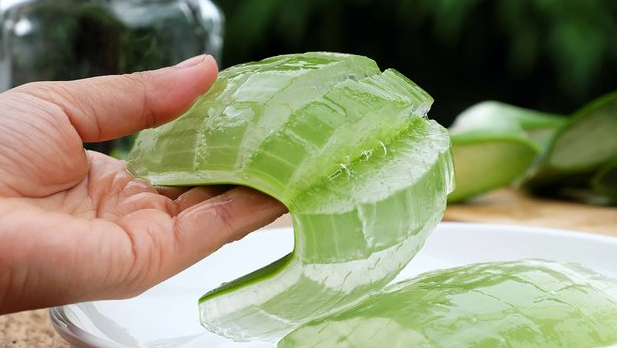What are the healing properties of aloe vera? + Video
Aloe vera, derived from the gel of aloe plants, has been utilized for centuries as a healing and skin softening agent. It holds a prominent place in traditional folk medicine, being used to treat various conditions such as constipation and skin disorders. However, modern research on aloe vera’s benefits reveals a mixed picture, with some studies indicating potential cancer risks in lab animals.
The Health Benefits of Aloe Vera – Aloe Vera for Skin and Digestion :
The Health Benefits Of Drinking Aloe Vera :
Uses and Benefits:
Research supports the traditional application of topical aloe vera for specific skin conditions, including psoriasis, seborrhea, dandruff, minor burns, abrasions, radiation-induced skin injuries, herpes sores, acne, and anal fissures. Furthermore, aloe juice, containing latex, has demonstrated powerful laxative effects and was once included in over-the-counter constipation drugs. However, the uncertain safety of aloe prompted the FDA to take action in 2002, requiring reformulation or removal of laxatives with aloe vera from store shelves.

Aloe vera gel taken orally may also aid in reducing blood sugar levels in individuals with diabetes and potentially lower cholesterol levels. However, the evidence for its efficacy in treating other medical conditions remains inconclusive.
Proper Dosage:
The concentration of aloe vera in creams and gels varies, ranging from 0.5% in minor burn creams to 70% in psoriasis treatments. As an oral supplement, aloe vera lacks a specific dose recommendation. For constipation, some use 100-200 milligrams of aloe juice or 50 milligrams of aloe extract daily as needed. In the case of diabetes, 1 tablespoon of the gel has been employed daily. Nonetheless, high oral doses of aloe or aloe latex are dangerous, and it is vital to consult a doctor for guidance on aloe usage.
Harvesting Aloe Vera:
Aloe vera is readily available in stores, but those interested in growing their own plants can follow these steps to collect the gel:
1. Cut an outer leaf near the stem and rinse it.
2. Place the leaf on a cutting board with the rounded side up.
3. Use a knife to peel off the skin around the edges.
4. Carefully slide the gel off the remaining skin.
5. Puree or mash the gel to obtain aloe vera gel.
Risks and Precautions:
Before using aloe vera, it is crucial to consult with a healthcare professional. Chronic use of aloe vera is discouraged due to potential risks. If the aloe product is free of aloin (a compound found between the outer leaf and the gel that may cause colorectal cancer in rats), it may be safe for topical use on sunburns. However, topical aloe might irritate the skin, while oral aloe could lead to cramping, diarrhea, and electrolyte imbalances, particularly with prolonged use.
Caution should be exercised when applying topical aloe to deep cuts or severe burns. Individuals allergic to garlic, onions, and tulips might also have a sensitivity to aloe. High oral doses of aloe should be avoided by those with intestinal problems, heart disease, hemorrhoids, kidney problems, diabetes, or electrolyte imbalances.
Aloe vera supplements may interact with certain medications and supplements like diabetes drugs, heart drugs, laxatives, steroids, and licorice root. Additionally, oral use of aloe vera gel might interfere with the absorption of medications taken simultaneously.
Given the limited evidence about its safety, aloe vera supplements should not be used orally by children, pregnant women, or breastfeeding mothers. Always consult a healthcare provider before starting any aloe supplement regimen to ensure safety and appropriateness for individual health conditions.


